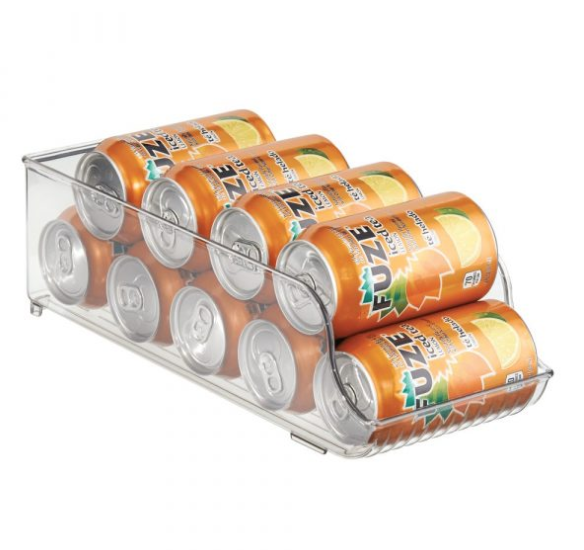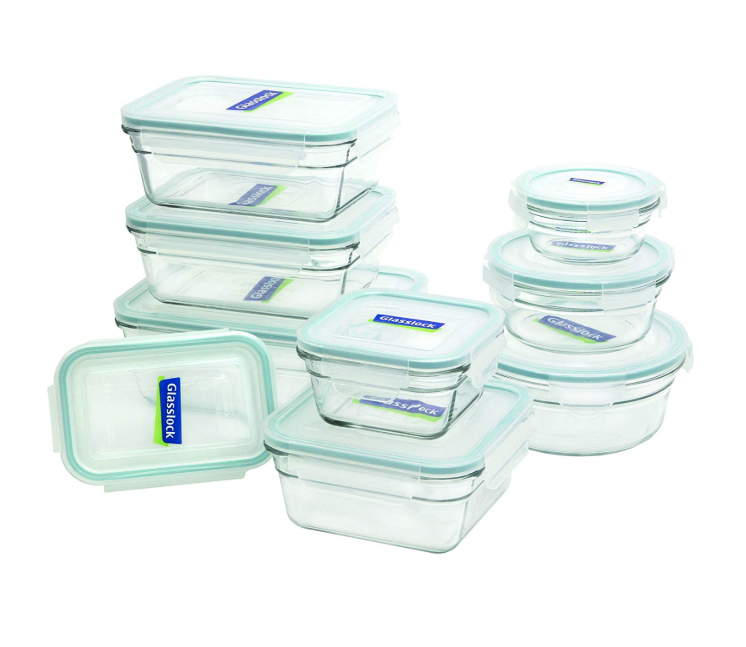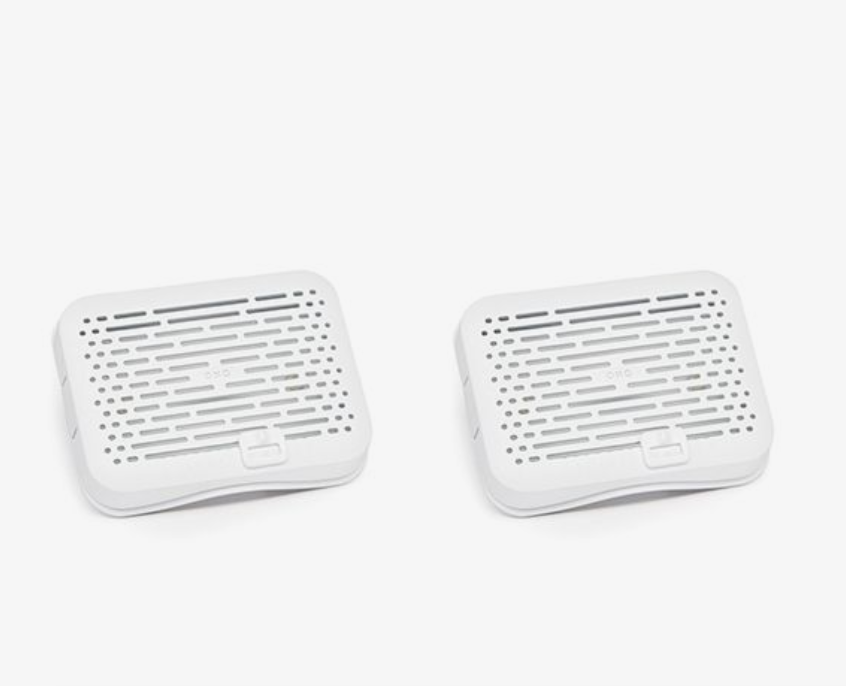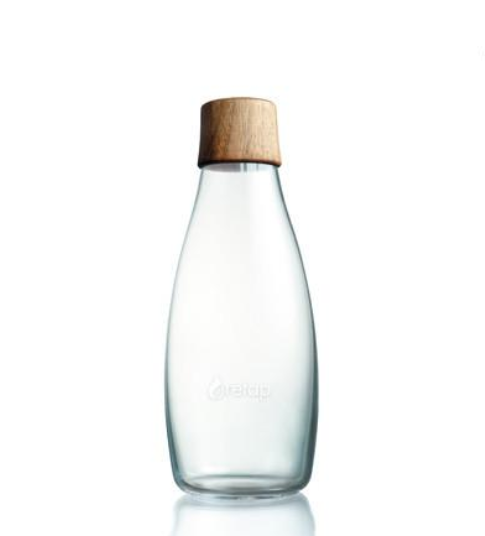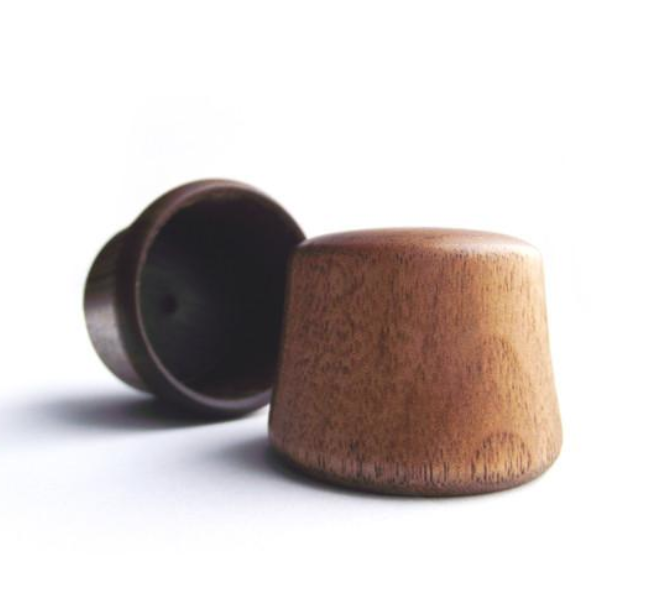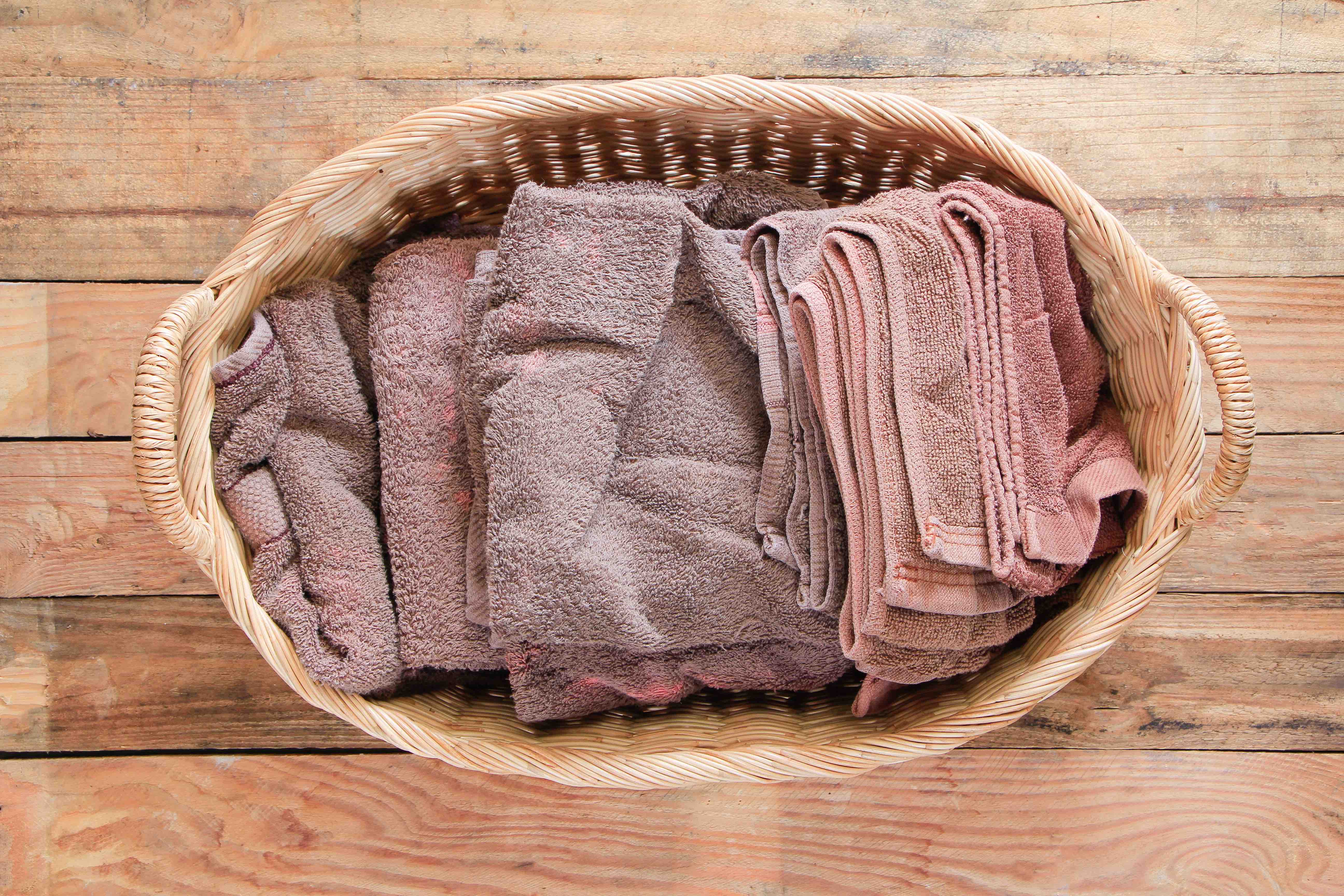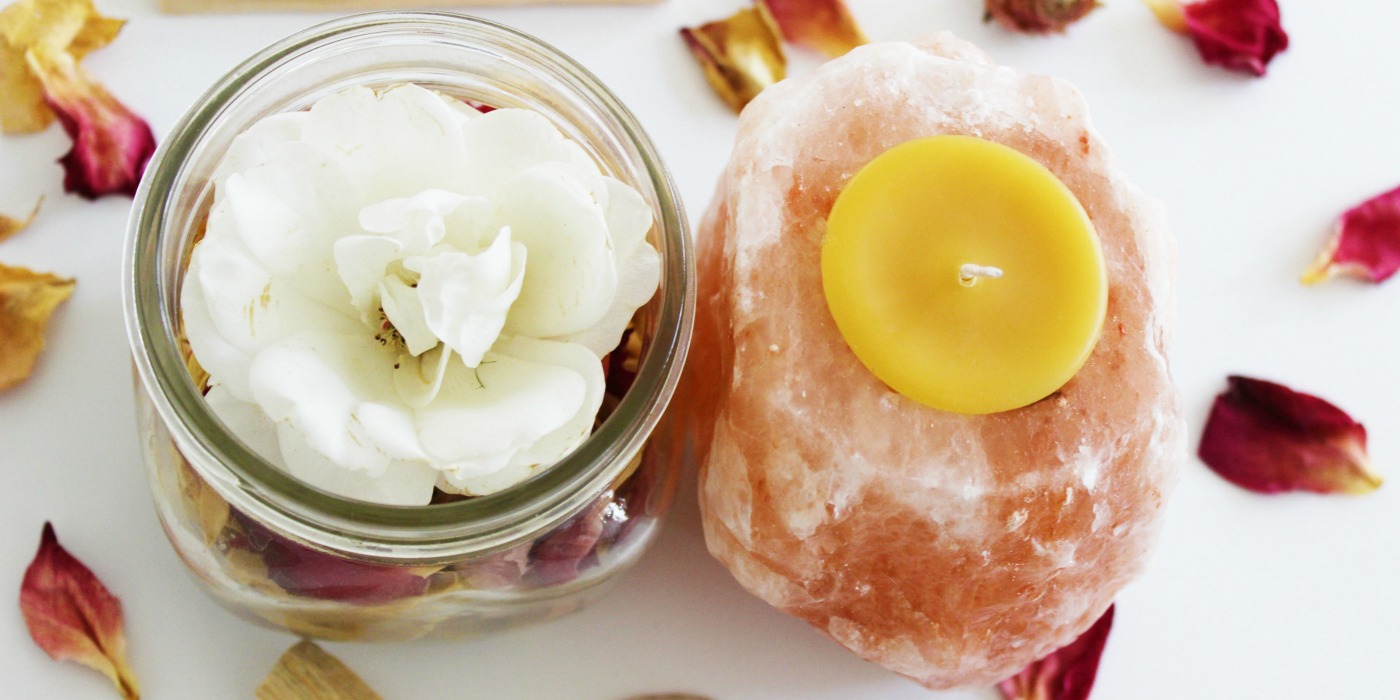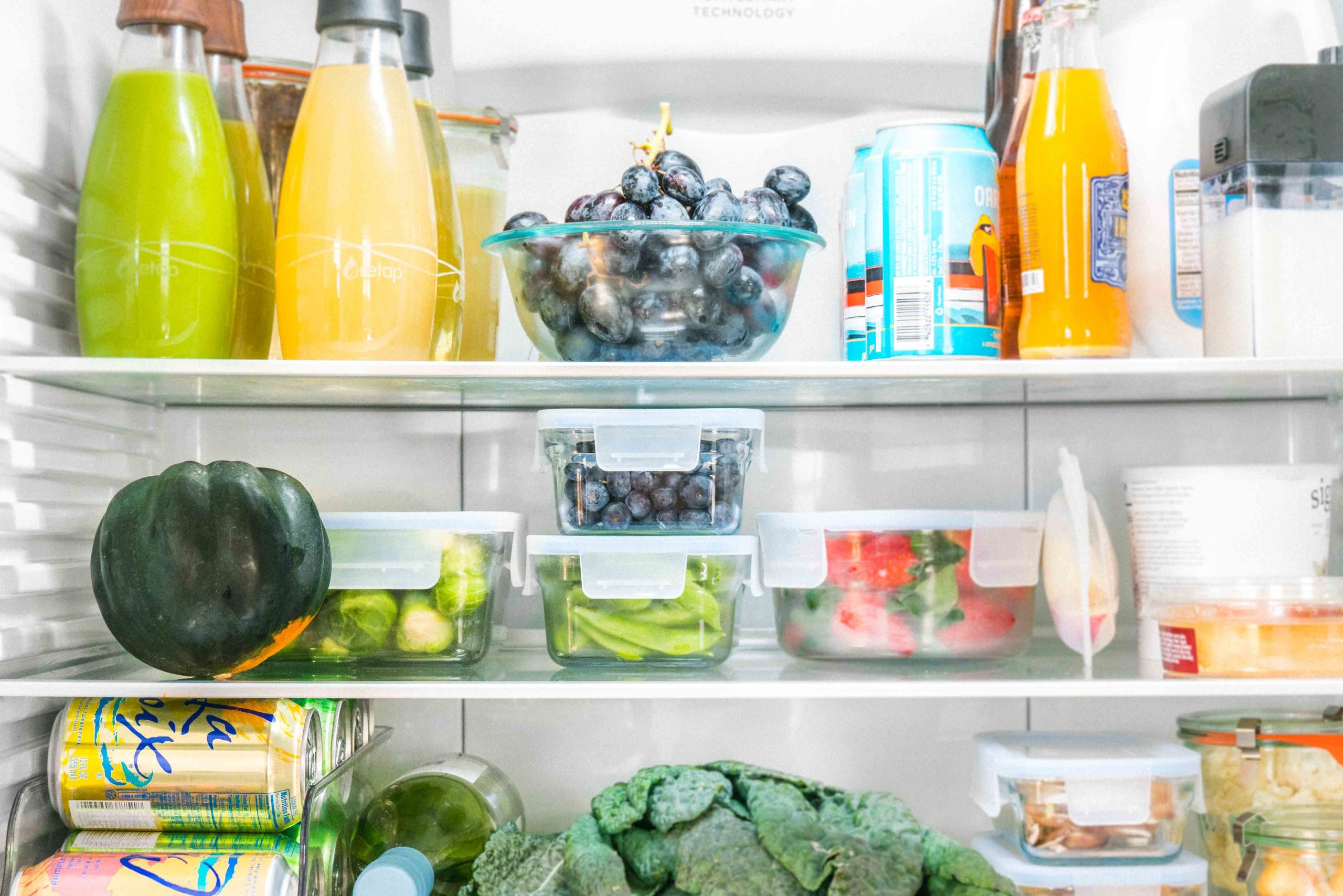
Let’s start this how-to with a caveat statement. I’m not pretending this fridge is perfect… it’s not perfectly organized or Instagram’s defined version of “healthy” (another topic for another time). But every time I run into people at the grocery, they want to know what’s in a dietitian’s fridge and pantry and cart snooping ensues.
My goal for sharing my fridge with you today is to give a real life look at a “healthy” fridge. Most editorial fridge features are a treasure trove of produce and juices. And unless you’re a juice shop, a hotel fruit sculptor (is that a job?) or a tropical bird, I just don’t think a fridge that looks like that is realistic or even useful. It’s not #FridgeGoals. It’s kind of a waste of a fridge and more often than not, it makes you feel like garbage via comparison.
When I open my fridge, there’s some of the aforementioned produce and yes, the juices from produce that’s about to go bad unless something is done with it. But there’s also half a bottle of New Zealand Sauvignon Blanc, some Michigan beer and at LEAST two kinds of cheese. There are English muffins. There’s a half done food science project my husband Chris is working on (please see bottom shelf white bowl) and most of the time some leftovers. Also cat food? Ergo it’s a real fridge for real life.
So if you too are a real person and not within the previously cited juice shop/hotel fruit sculptor/tropical bird, here are some tips that can help you eat healthier, waste less food and money and have something to do on a glorious Friday night while drinking wine and avoiding going somewhere you don’t want to go. We provide many services here and mediocre social event avoidance is just a bonus.
Before we get started, let’s define ‘healthy’. There’s a much larger conversation happening around this word in the wellness industry right now. I personally think there’s an element that’s individualized to defining healthy beyond baseline metrics. As a dietitian, it means having a variety of produce items with other food groups to create nutrient dense meals. As a food lover, it’s being seasonally conscious for the best versions of items possible. It’s also being conscious of food waste and single use plastics (but yes I see that clamshell of lettuce too). And to be honest, for me, being healthy also means being organized. Figure out what healthy means to you beyond the baseline. However you define it, I think you’ll find these tips helpful.
You use what you see: glass containers.
Most of us have lazy brains so taking the effort to open an opaque container is just not tempting. Putting options in glass shows you what you have at a glance making it more tempting to go for the vegetable sticks over chips in the pantry. There’s also a styling secret here. If you look at styled rooms, especially kitchens and bathrooms (like cotton balls in jars), one thing that’s typically done is remove products from their branded packaging. It helps remove visual clutter. Try it.
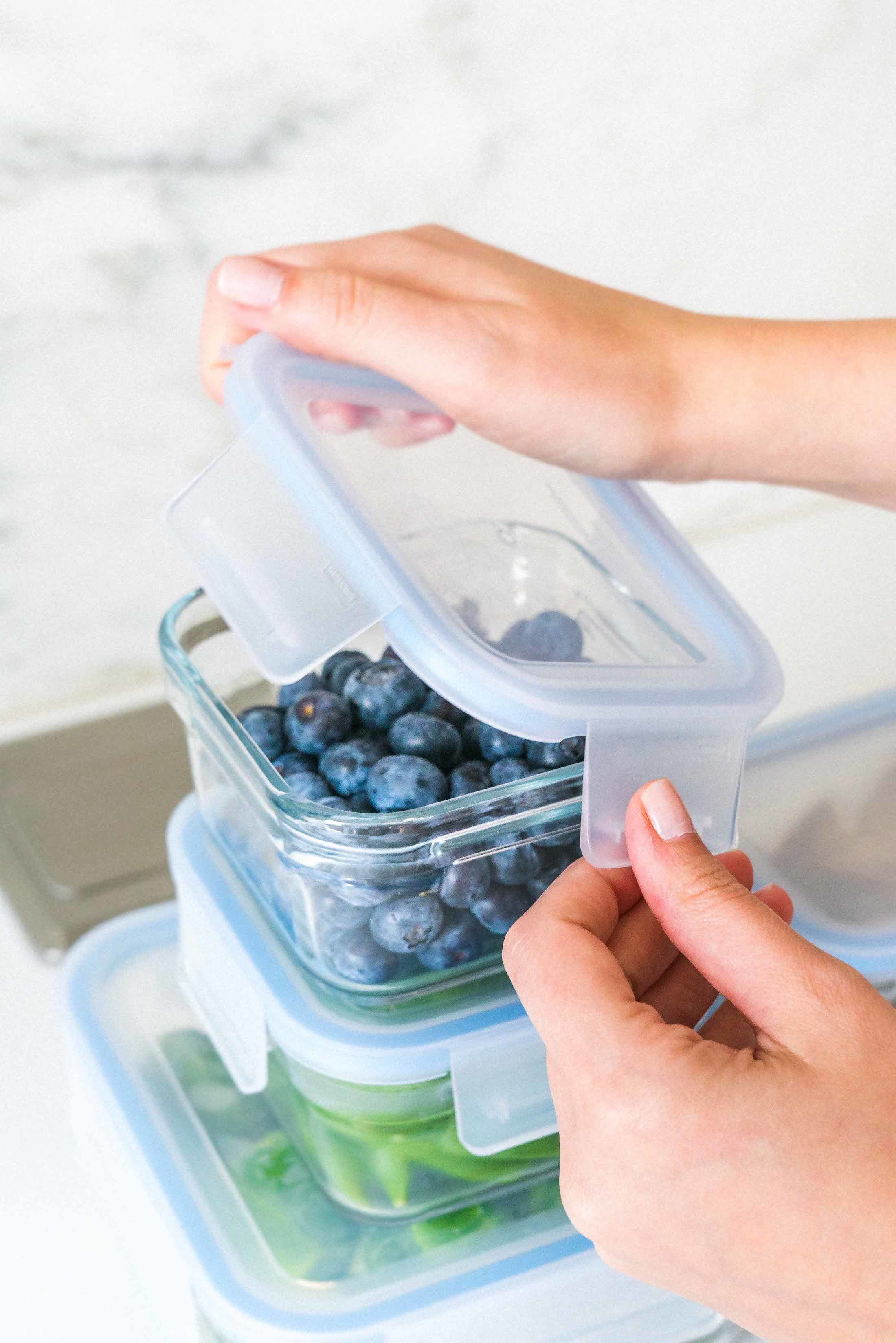
Store food in usable forms.
As soon as I buy something like grapes, I wash them and cut them into ‘trees’ for easy snacking. I try to apply the same rules to everything without going crazy. For healthy snacks, I can pre-chop produce or cheese or even use energy bite balls pre-portioned in Stasher bags to make them grab and go.
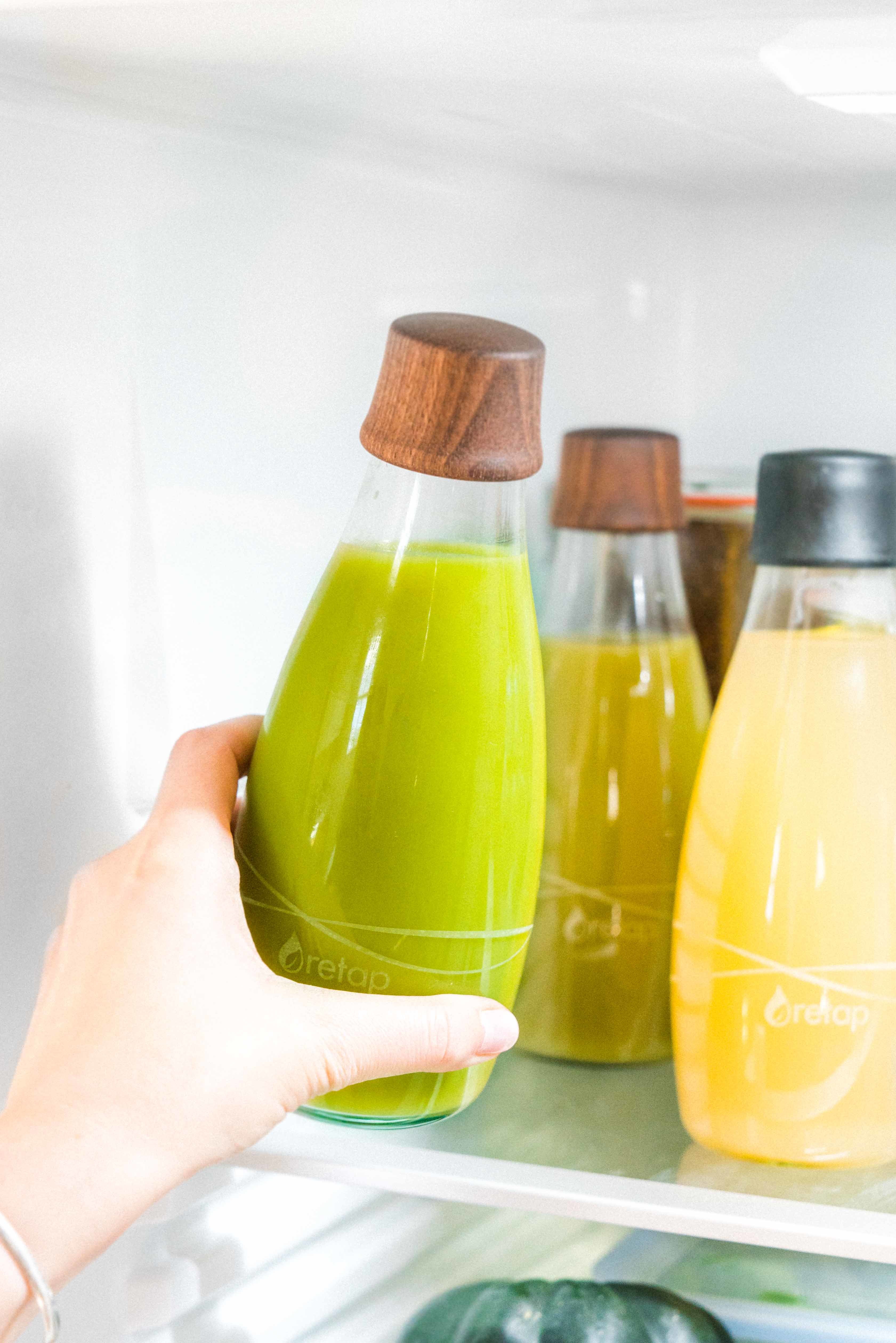
Staying hydrated? Use Retap bottles you can take with you anywhere. For meal time, cutting off the ends of leeks for example and washing them will make dinner prep time much shorter after work. That means it’s less tempting to order in. You don’t have to go full on meal prep mode like some people do every weekend- to be honest that’s not what I do. Just do what makes your life easier.
Have healthy options on hand.
You can’t make nutritious meals unless you have the ingredients to get you there. I typically always have a soft green (Butter lettuce) and a sturdier green (kale or cabbage) as well as something like a squash, sweet potato or cruciferous vegetable. I like a fruit for snacking and always, always a ton of citrus for adding brightness and flavor. To keep things fresher longer, I like the OXO crisper inserts. They stick onto the drawers without taking up valuable space. I also have to mention, I keep my pantry stocked with pulses, nuts, grains etc. Remember, the fridge isn’t the whole story.
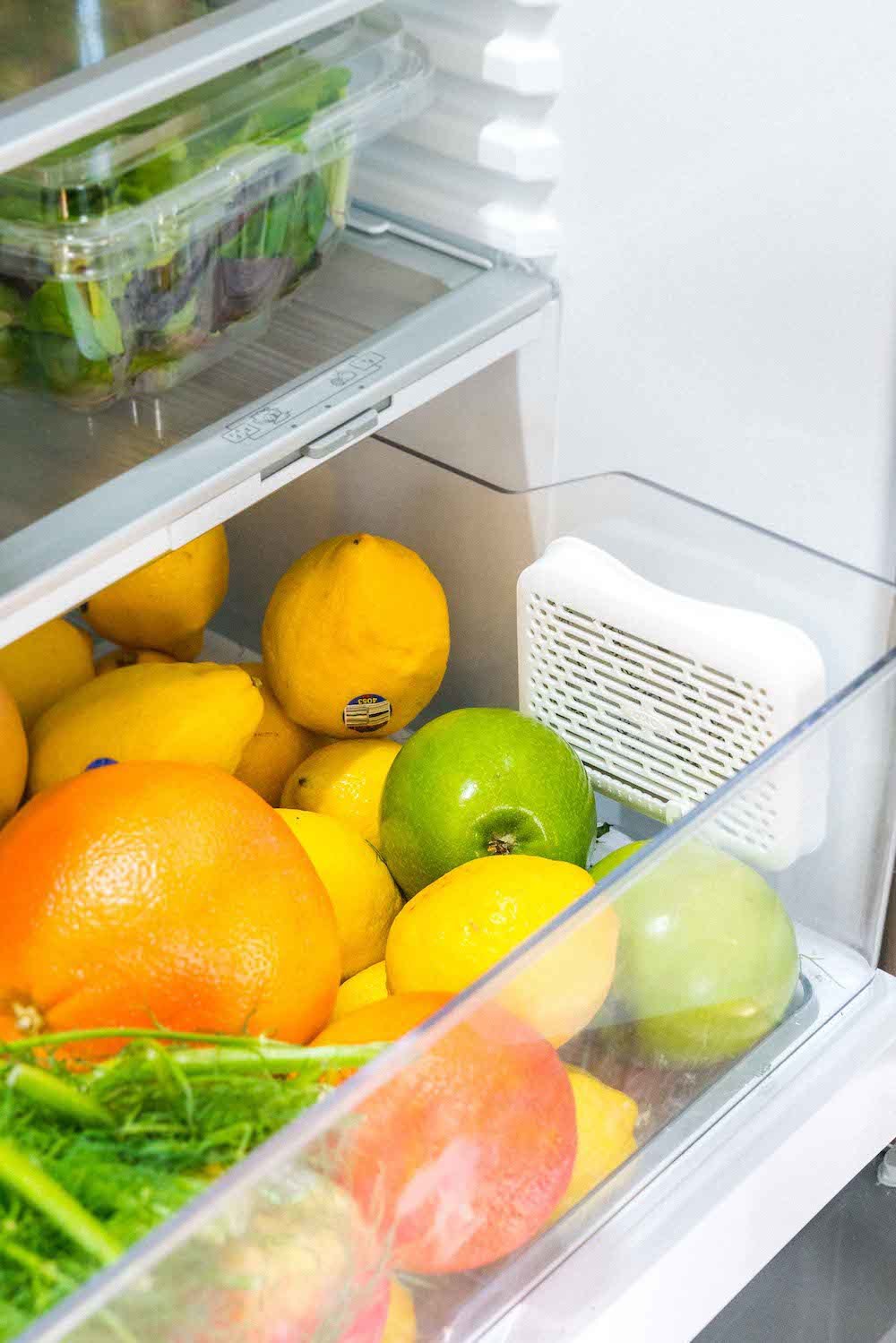
Have ‘confetti’ to make healthy ingredients tempting.
We call it confetti: the stuff that goes on top of the healthy. Cheese (cheeseS always plural), bacon, sauces, dressing- whatever you need! My entire fridge door is for condiments. We like trying different sauces and it makes a veggie stir-fry or a salad a snap. In childhood nutrition education we always tell parents to pair a food kids like with a new healthy food to increase the chances they’ll accept it. Let’s be honest…adults need it too.
Put things that need to be used front and center.
To reduce waste, put leftovers or what needs to be used ASAP where you’ll see it. If it’s produce, it’s fine if you can’t figure out how to use it all. Honestly anything I’m stuck on I throw in a juicer and then store in a Retap bottle. Sometimes I’ll also group things that I’m using for dinner together on a shelf so I can pull out everything at the same time.
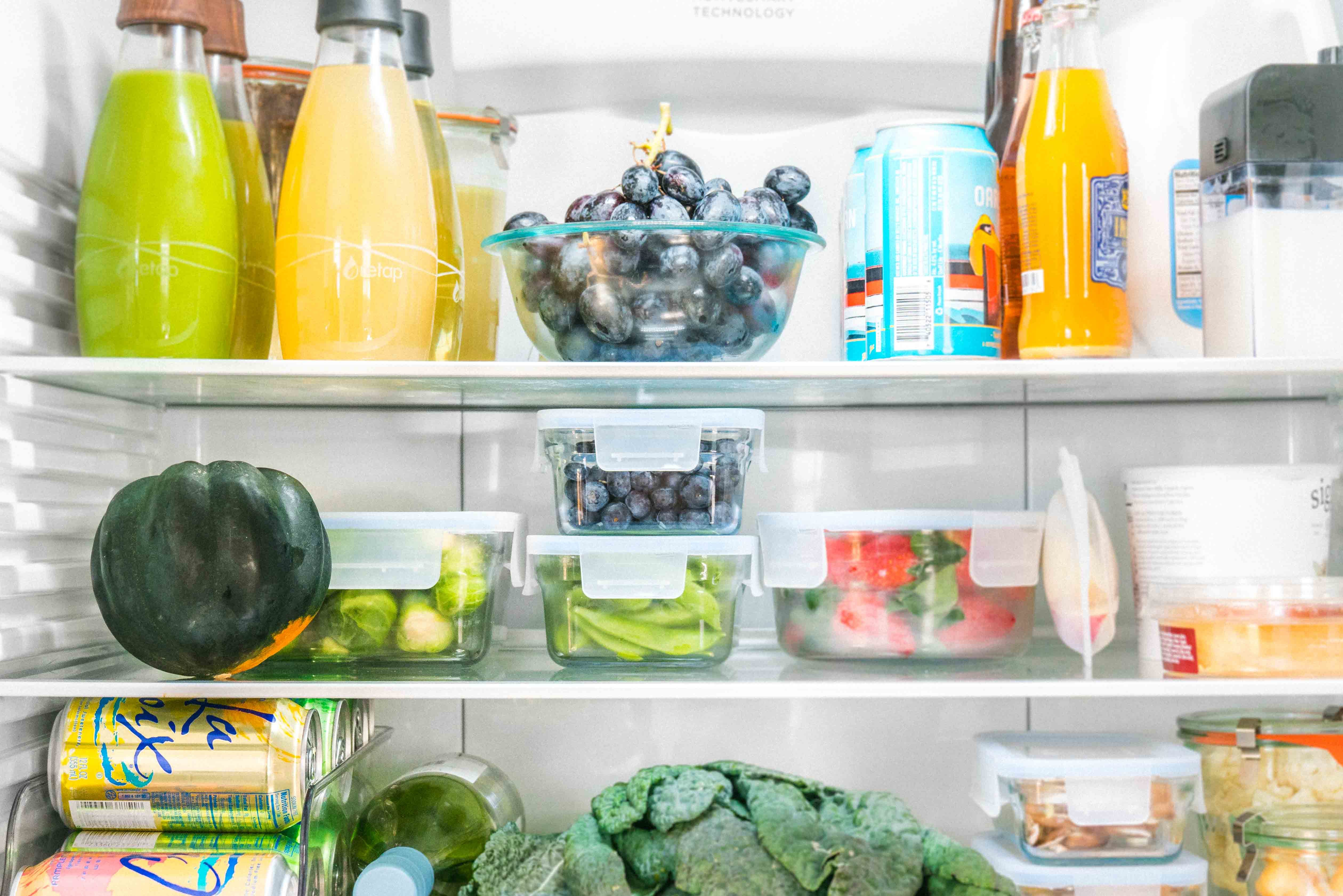
Use storage solutions that aren’t frustrating.
I hate fridges that are super deep. I will absolutely forget about what’s at the back of the fridge if I have to pull out three layers of things at a time. Using things like a can organizer is space conscious and helps bring things to the front automatically. Another reason I like these glass containers is they stack easily. More storage space and you can still see everything!
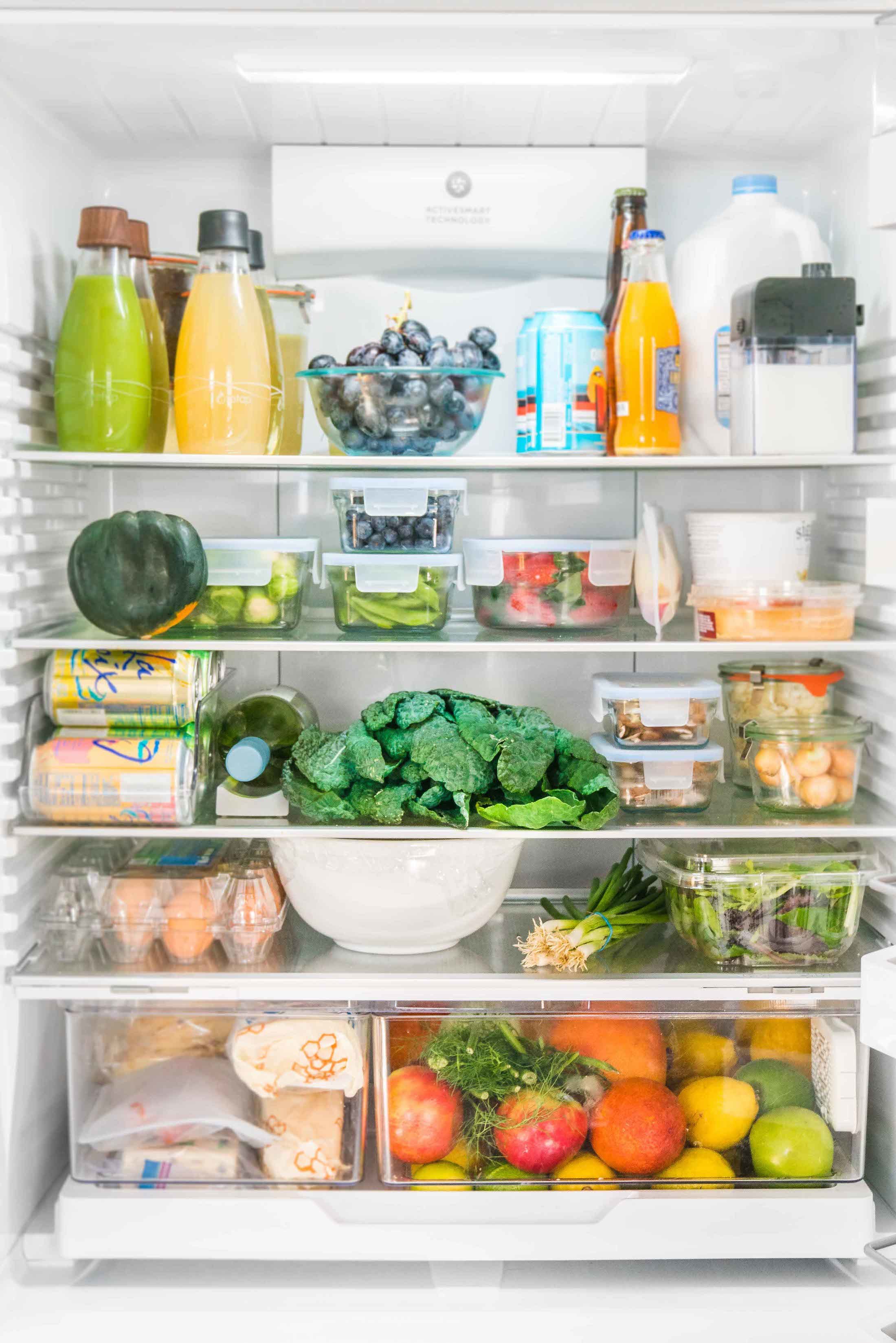
Remember: everyone has their own definition of healthy. A fridge, or anything in your kitchen for that matter, is meant to be functional for your life. Use what you need to get you there.


